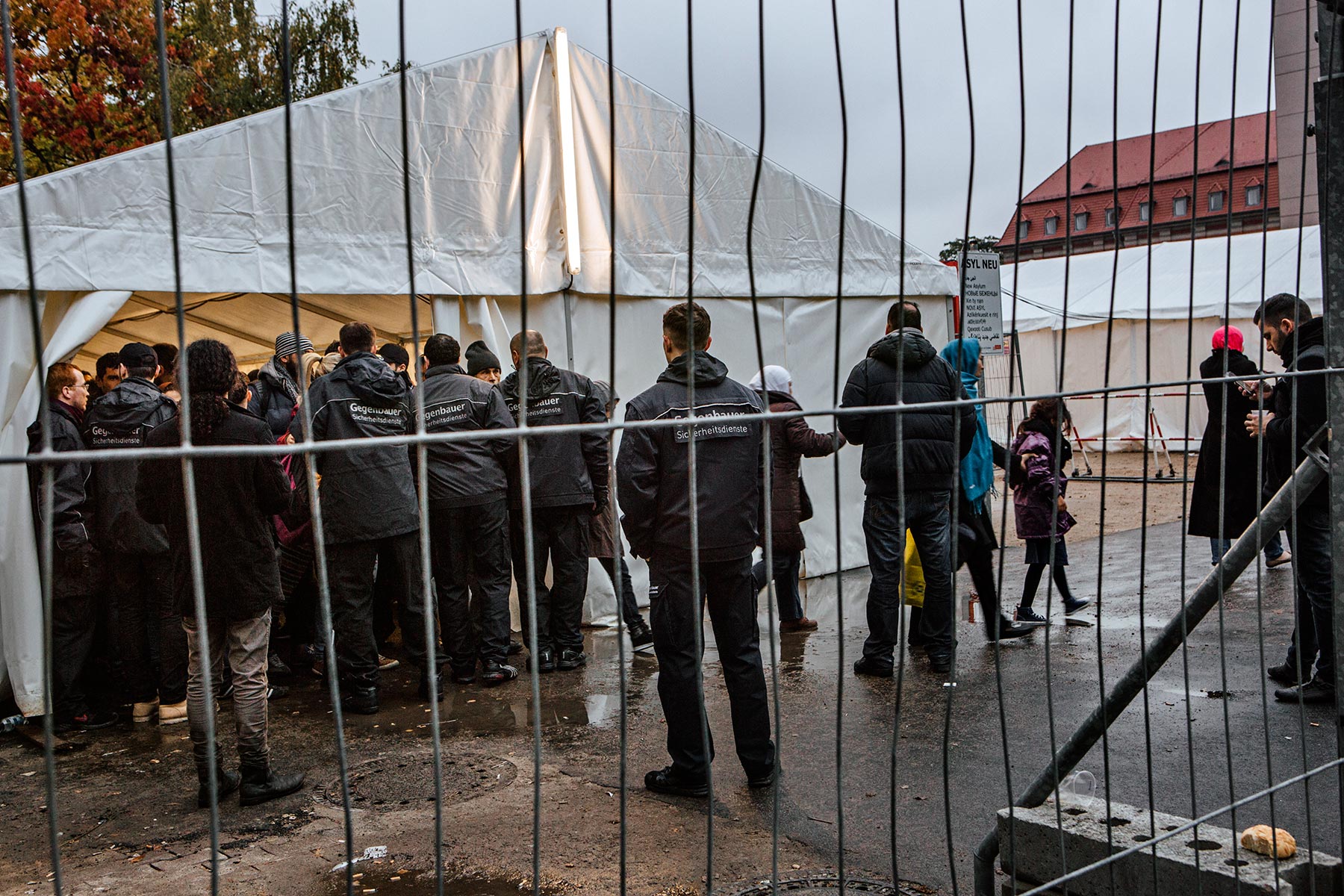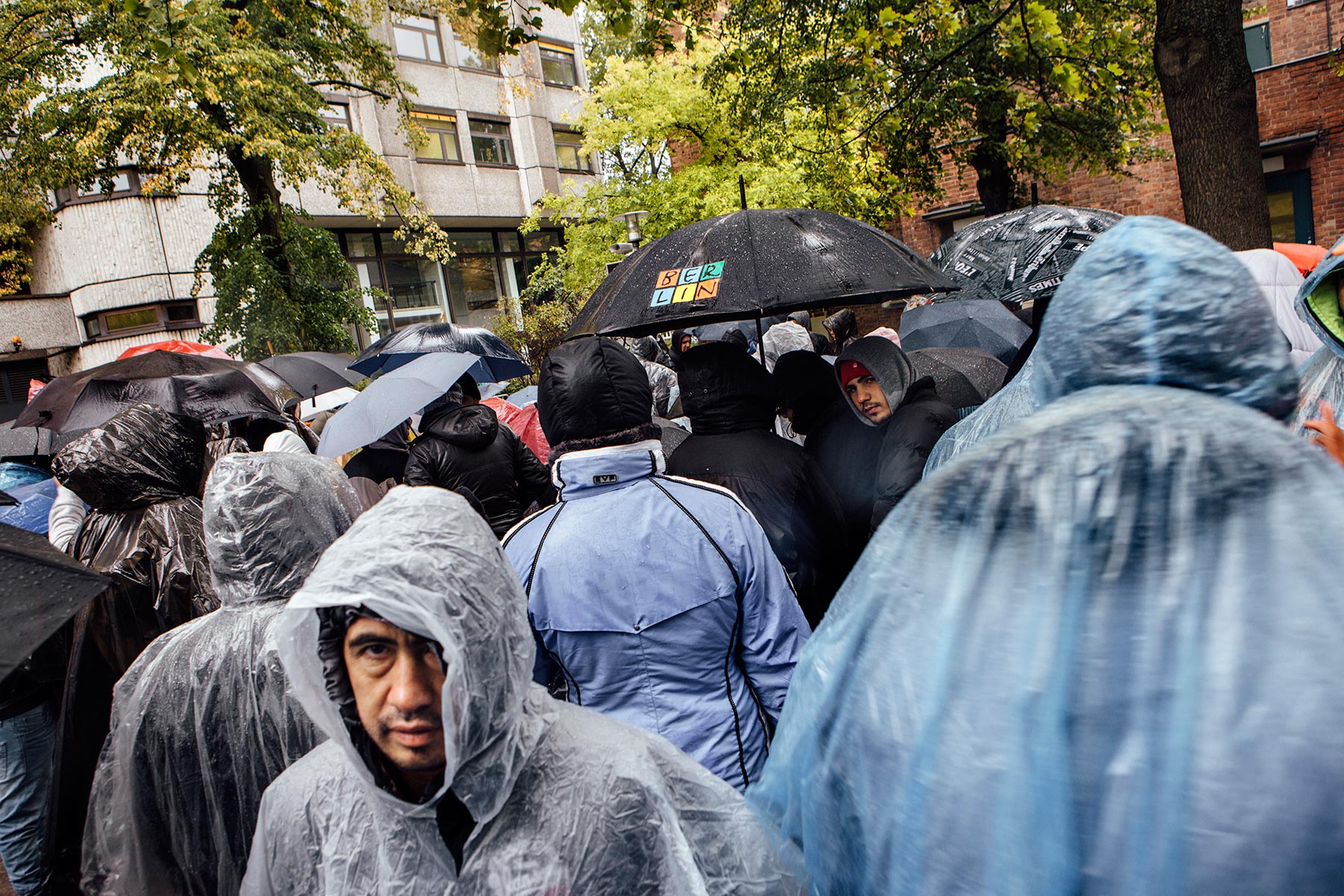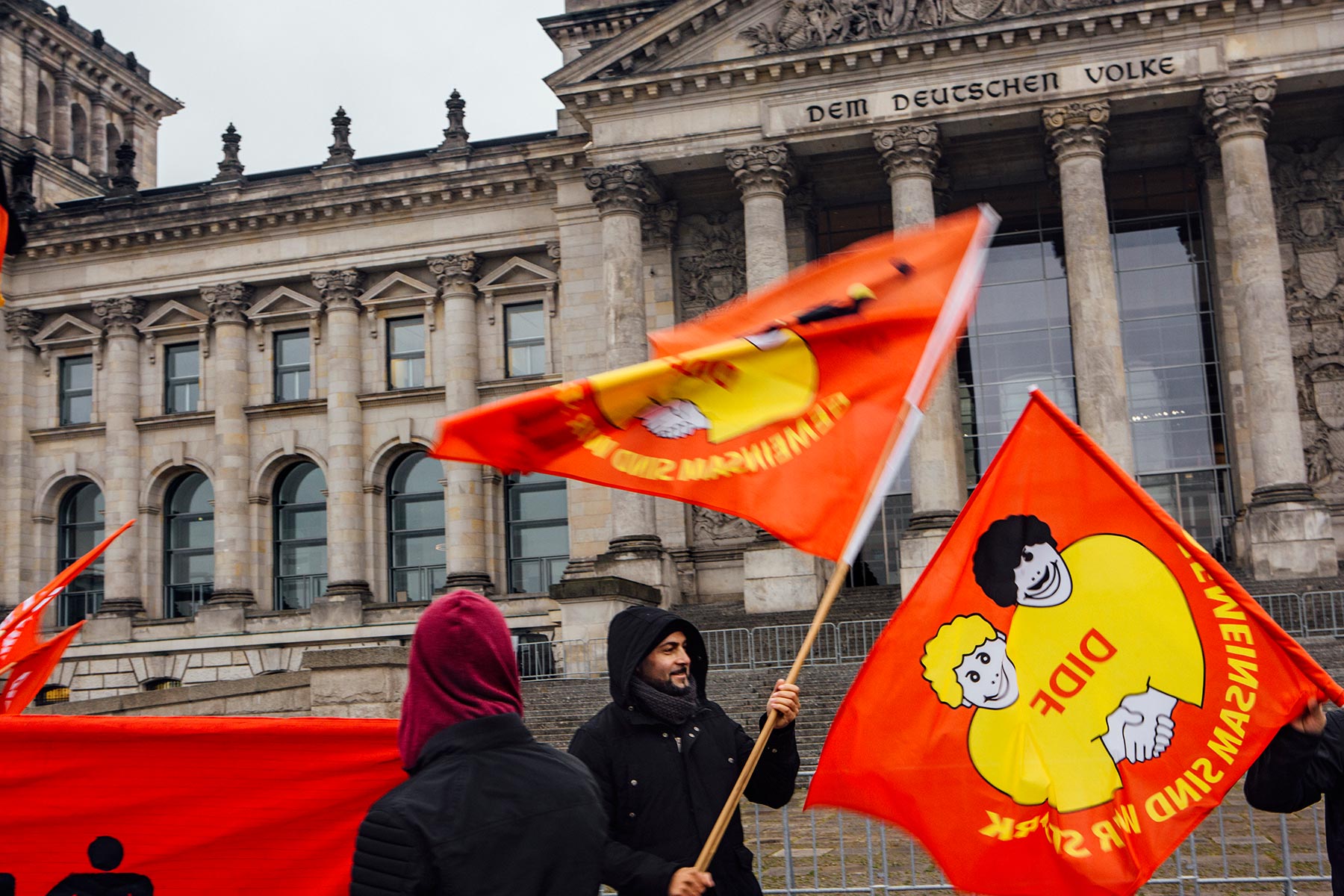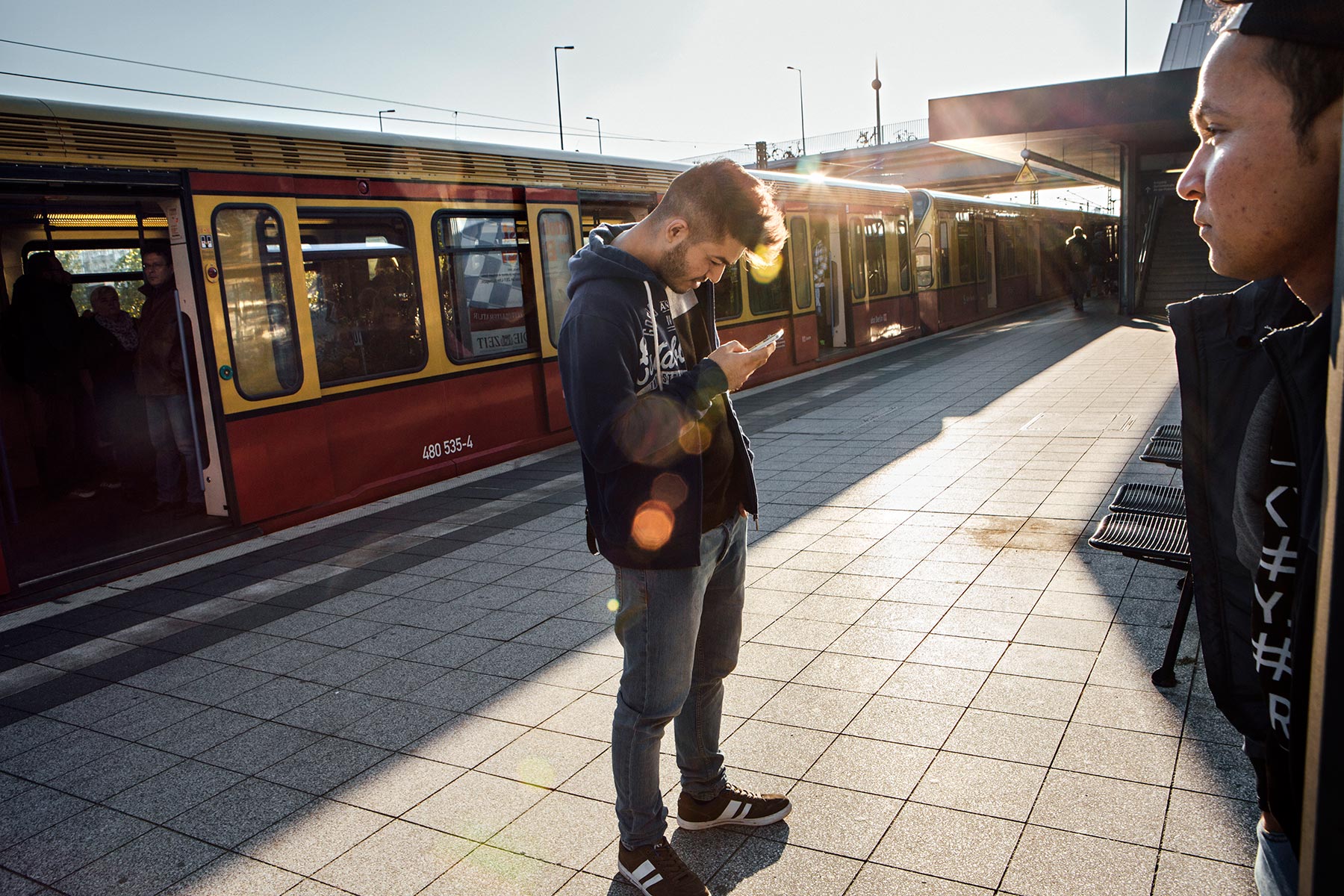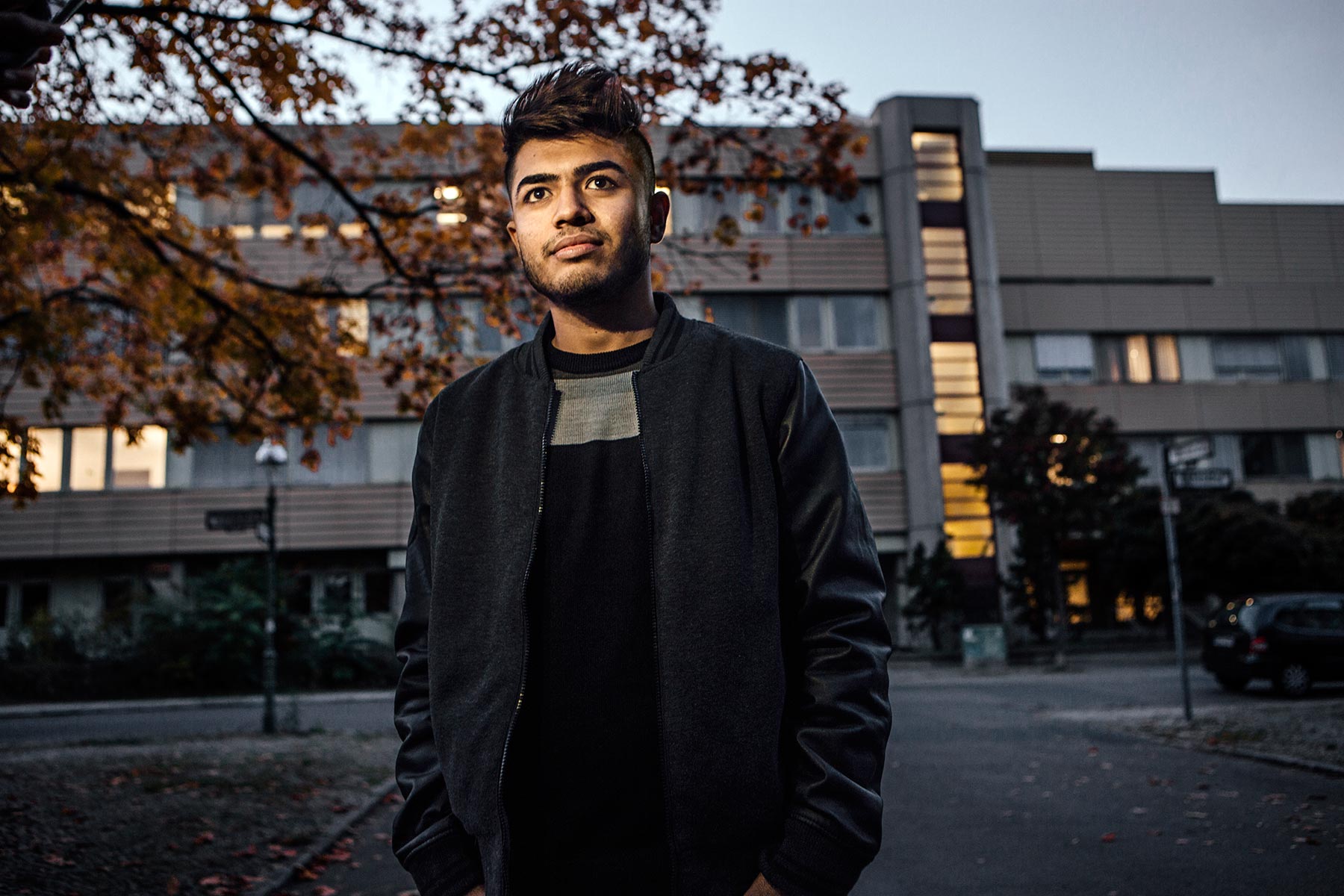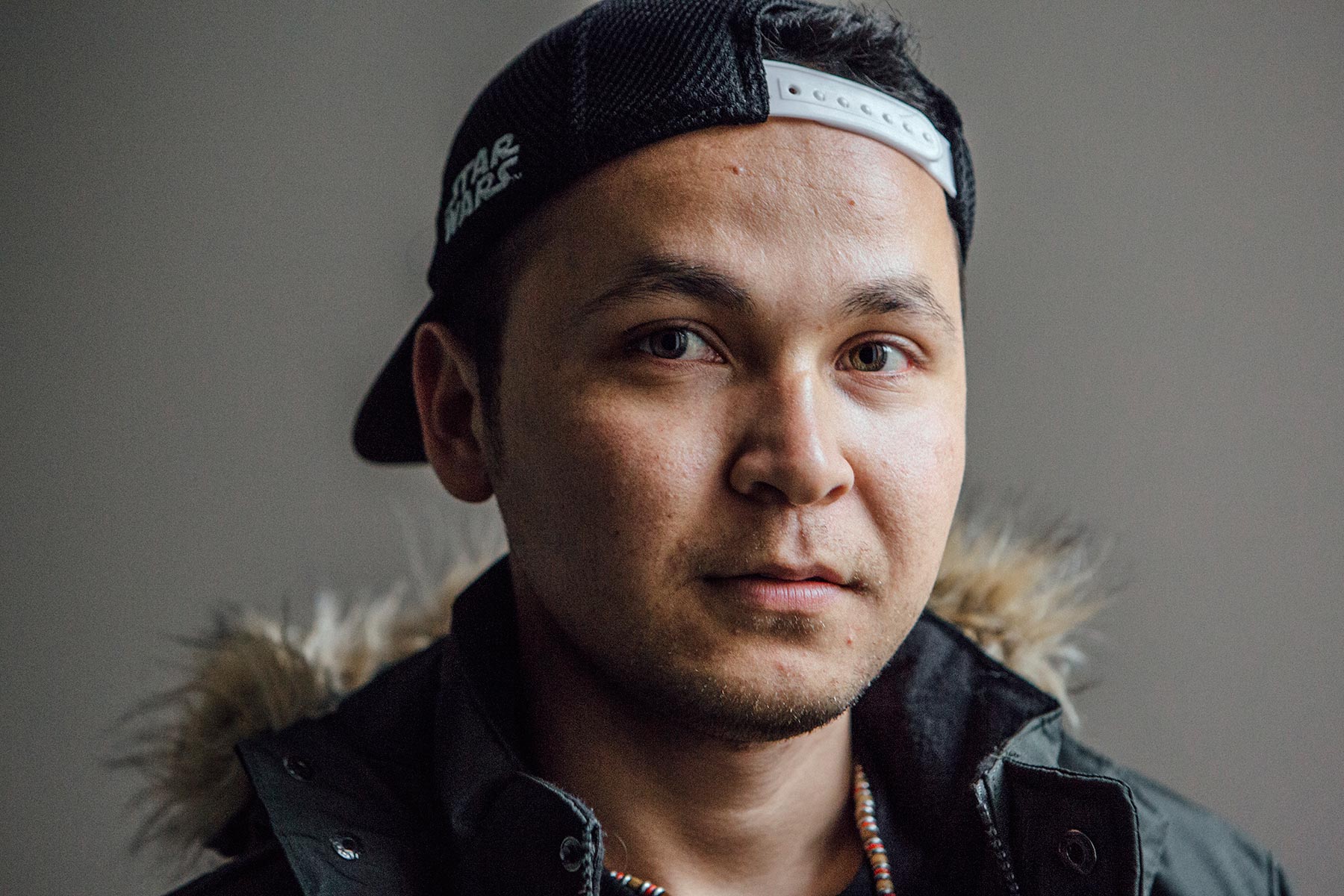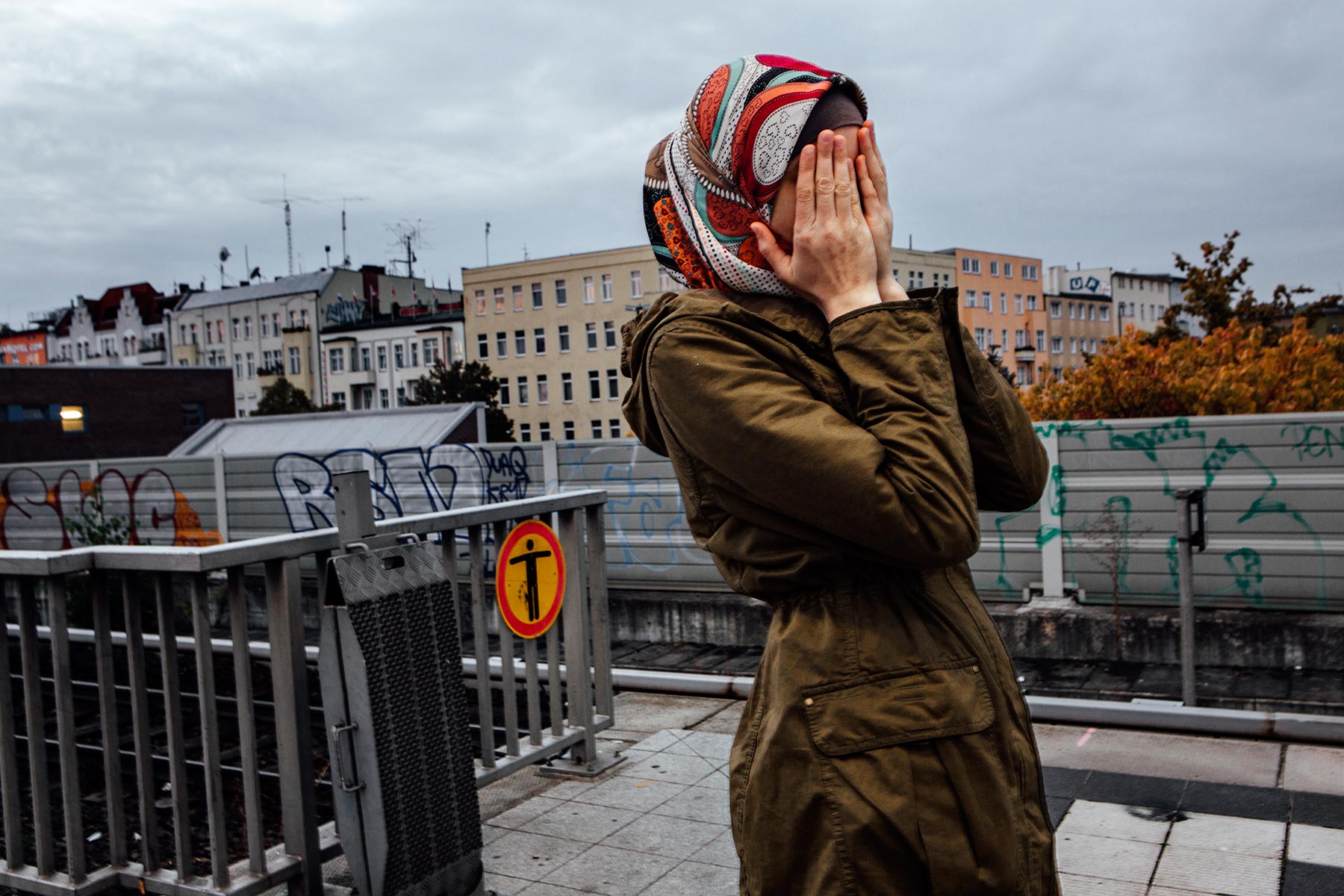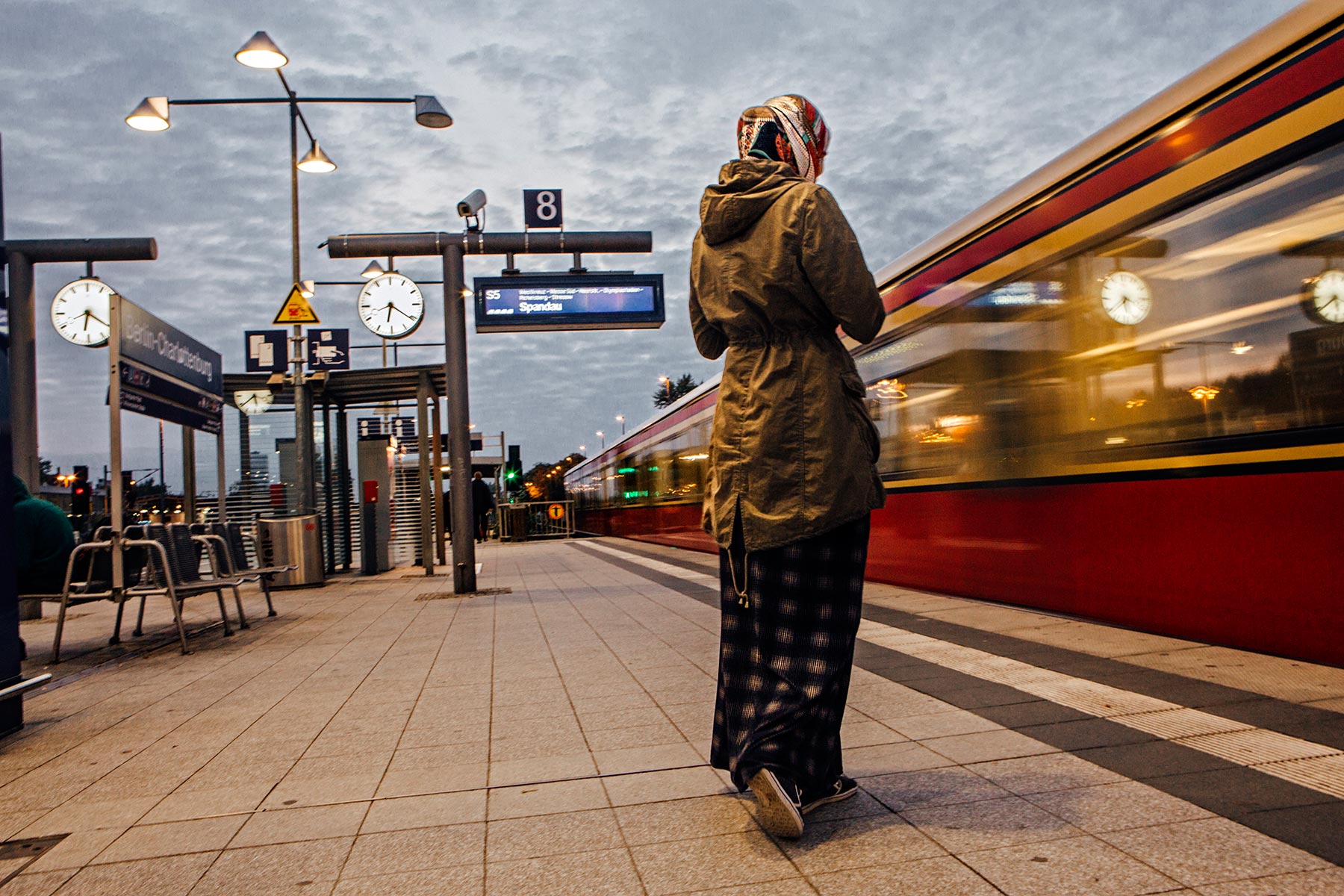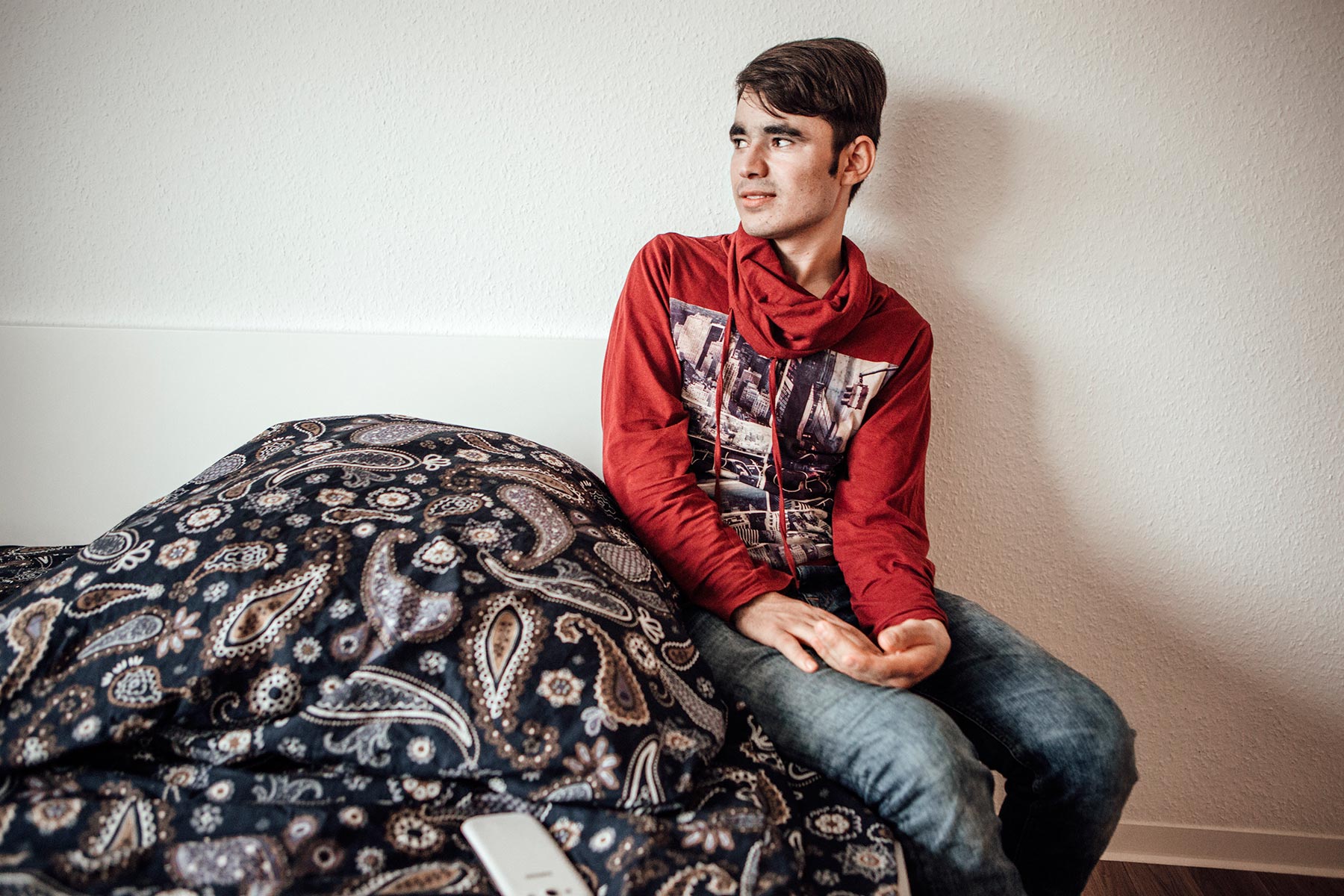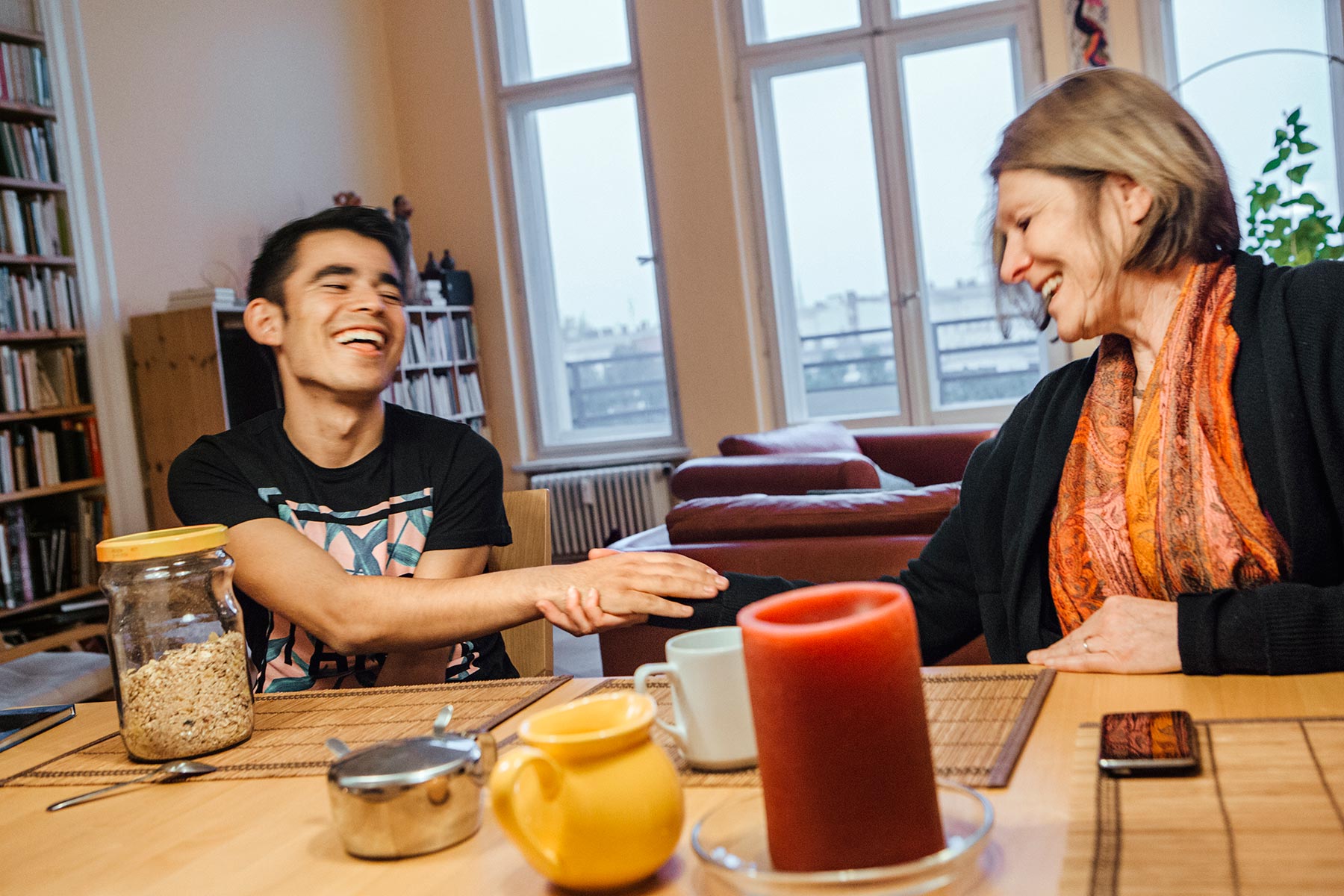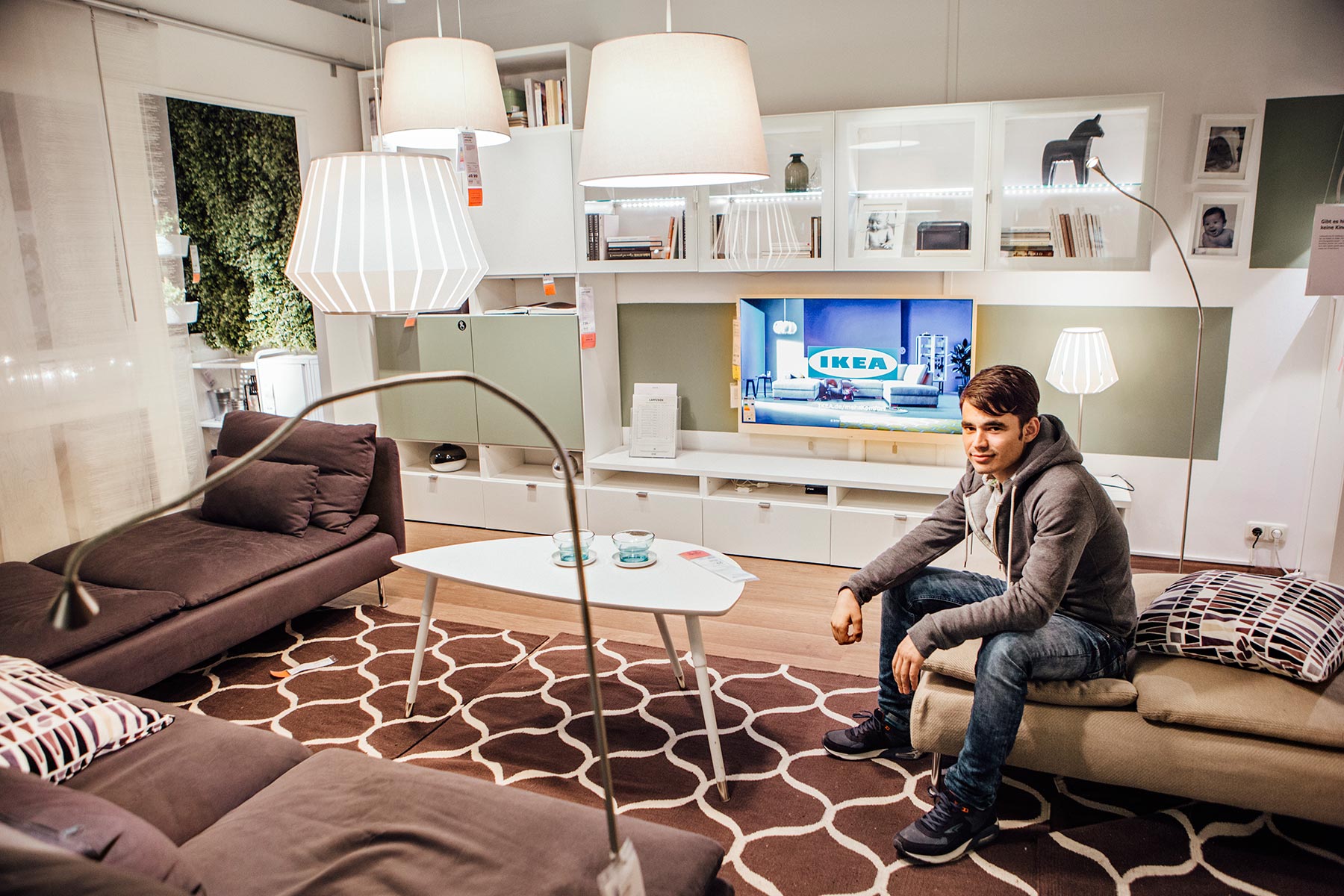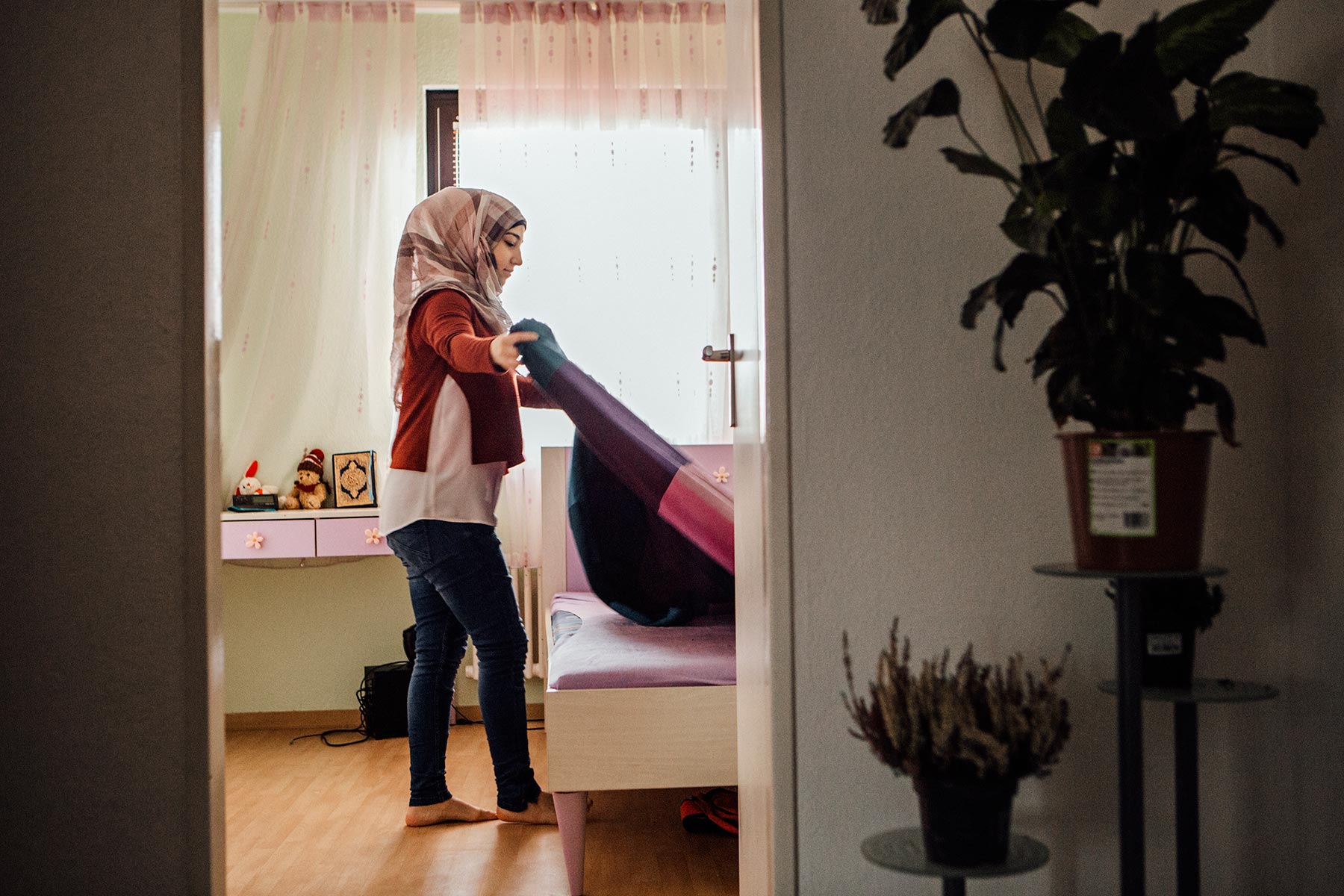
Berlin's refugee youth
As services for asylum seekers are cut, advocates worry that a new generation will fail to integrate into society
Jawad is 17. He arrived in Germany nine months ago after fleeing Afghanistan with his mother and 15-year-old sister. Today he lives with them in a single room in a renovated mental hospital that now shelters 500 refugees on the western outskirts of Berlin.
On a fall night not long ago, Jawad sat on his bed, transfixed by a TV news broadcast. Despite his fast-improving German, he could barely keep up. But the images, of people waiting in long lines outside emergency shelters and of politicians railing against the influx of refugees, spoke for themselves. “These days, lots of people are coming. Does it mean it will continue like that?” he asked. “Will they keep us or send us back to where we came from? We still hope that they give us the opportunity to continue our life like this. To stay here forever.”
Jawad is far from alone in wondering what will happen to the tens of millions of people, many of them minors like him, who are fleeing their homes. (His name, along with those of other young people in this story, has been withheld because of concerns about negative repercussions on their asylum applications). According to the U.N., the number of refugees globally is the highest it’s been in 20 years. More are arriving in Germany than in any other European nation. As of November 2015, an estimated 30 percent of those applying for asylum this year were under 18, according to Germany’s Federal Office for Migration and Refugees. Another 25 percent were in their late teens or early 20s, many of them making the journey alone. In a speech to her party’s annual congress last week, Chancellor Angela Merkel defended her policy of opening Germany’s borders to refugees and insisted that the country can absorb the influx. “This is a historic test for Europe, and I want — hopefully, I can say that we all want — that Europe passes this test,” she said.
But behind the scenes, there’s a fierce political fight being waged by conservatives and local authorities to close the open door. After a widely heralded summer that saw a new “welcome culture,” or Willkommenskultur, flourish here, far-right populism — once banished to the margins of German politics — is gaining strength, fueled by the recent terror attacks in Paris. Merkel, even as she defended her policies, promised to limit the number of refugees and work with countries such as Turkey to prevent people from making the journey to Europe in the first place.
Compromises intended to close the door and reduce the number of refugees have already brought increased red tape, uncertainty and longer waits for asylum seekers. Laws enacted in early November have cut cash assistance, accelerated deportation hearings, restricted the rights of refugees to bring their families to join them in Germany and have barred asylum seekers from seeking employment until their immigration claims have been decided — a process that can take years.
Moreover, under the new laws, German language classes, vocational training and higher education are now limited to those with the best chances of being granted asylum. Emergency shelters in abandoned warehouses and even airport hangars are quietly becoming long-term housing. Cash benefits are being paid out at most a month in advance, making it hard for families to plan for the future.
All this may erode policies put in place over the last decade to integrate refugee youths, according to Ulrike Schwarz, head of the Federal Association for Unaccompanied Minor Refugees, a non-governmental advocacy organization in Berlin. Indeed, mental health experts and refugee advocates worry that a generation of young people already scarred by war and flight will be further worn down by bureaucracy and delay. “These new laws really block a lot of the ways to integrate,” said Schwarz.
She and others say that the system for serving young refugees is already starting to break. Behind Germany’s reputation for order and efficiency lies a federal system of 16 states with vast disparities in wealth, political attitudes and policy approaches. Berlin, itself a state, has a particularly bad reputation. Though the German capital has become a celebrated tourism magnet, its social services are chronically underfunded and plagued by decades of mismanagement.
Even in the best-run cities, waiting times for refugees can increasingly be measured in years. Thanks to a set of regulations known as the Dublin Protocol, people who were “received” elsewhere in Europe and then continued on to Germany must wait six months for their cases to expire in the countries they were first received in before they can file asylum claims here.
Meanwhile, refugees’ lives are put on hold, compounding the suffering they’ve already experienced. “PTSD is more a disorder of not being able to recover and start a healing process,” said Elise Bittenbinder, head of the National Association of Psychosocial Centers for Refugees and Victims of Torture. “If they have to live that long in uncertainty, it’s definitely not going to help their psychological well-being.”
Edging young people like Jawad out of educational services and the job market threatens not just their mental and physical well-being but the ultimate goal of an integrated society, according to a study released earlier this year by the Bertelsmann Foundation. “If the integration process fails, the price to pay is extraordinary,” said Mazda Adli, a psychiatrist at Berlin’s Charité Hospital. “Being treated as foreigners may cause trauma surpassing the trauma that caused them to leave their homeland.”
There’s also a growing fear young people will get lost in the cracks. A new law passed in November, for example, will distribute responsibility for unaccompanied minors among Germany’s nearly 400 state and local youth welfare offices. The law was designed to alleviate the pressure on cities like Berlin. The number of unaccompanied minors arriving here in 2015 was 300 percent higher than in 2014, and the 110-bed shelter where children are housed until more permanent accommodations can be found has been full for months.
But experts worry the law may backfire by sending kids to offices that are unprepared for the challenge. “Maybe 10 or 20 of these offices have expertise in dealing with unaccompanied minors,” Schwarz said. “A lot of them have never dealt with an unaccompanied minor before, and they may not be equipped to treat them for trauma.”

Scroll for more


Even health care is subject to a long wait. Until they've been in the country at least 15 months, refugees cannot access any medical assistance beyond emergency care without written permission from an asylum office.
Recent research shows that that, too, may be shortsighted. In a study published in July, economists compared health care costs in the cities of Bremen and Hamburg — where refugees have had full, immediate access to the health care system since the early 1990s, when hundreds of thousands of people fleeing war in the Balkans arrived in Germany — to the rest of the country. The researchers found that the long-term costs of restricting or denying newly arrived refugees health care amounted to almost 400 euros ($433) more a year per person.
Some politicians and economists have argued that the scale of this crisis is different and that the up-front costs of caring for refugees are potentially overwhelming. The state of North Rhine-Westphalia, for example, estimated that the annual costs of medical care for refugees were triple those of the average German medical patient. In July, local authorities across the country demanded federal subsidies of 5.6 billion euros to cover the costs of caring for the new arrivals; they were given 1 billion. And there are logistical problems, too: Translators are lacking, making communicating with doctors difficult.
For many refugees, the outpouring of goodwill and help from volunteers has been key to filling the gaps in the official support system. But experts say relying on volunteers, charities and nongovernmental organizations to take care of new arrivals isn’t a sustainable solution. “Eventually, you need people who get paid,” Schwarz said. “Putting all the work on volunteers isn’t the idea in a democracy with a social safety net.”
Yet even funding to train volunteers is in short supply. Ingeborg Williams, who volunteers as a legal guardian for an Afghan unaccompanied minor, was trained, along with a few dozen others, to navigate the family court system by the Berlin-based NGO Akinda in 2014. “I wanted to do something serious and have some legal responsibility,” she said. Despite the sharp increase in arrivals since then, Williams’ was the last class Akinda trained.
With Germany’s system and celebrated Willkommenskultur straining, the fact that November set a new record for refugee arrivals in Europe is unsettling to those already here. Meanwhile deportations to countries that German officials deem safe, including Afghanistan, are expected to rise sharply.
As winter approaches, Jawad is focusing on his German classes. Like any teen, he’s on Facebook. Increasingly, his posts are in German. His feed tells of a diaspora in motion: His friends from back home in Afghanistan posting from Turkey, Pakistan, Iran and refugee shelters across Europe. “There’s no opportunity for us back home, just a dark future,” he said. “What happens next, I don’t know. I hope it is getting better and better.”
